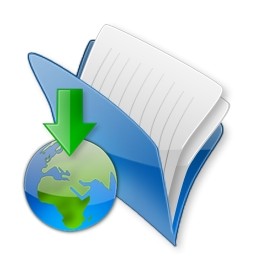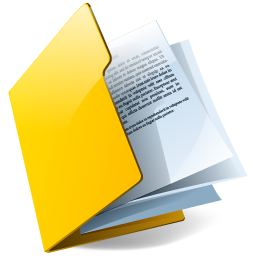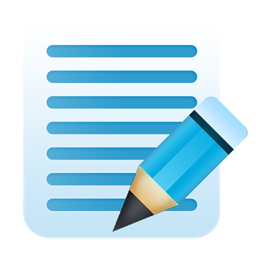Informatics Practices
Informatics Practices class 12 syllabus, question papers, online tests and important questions as per CBSE syllabus. CBSE Notes, test papers and school exam question papers includes detailed solutions. The topics covered are Networking and Open Standards, Computer networking, open source concept, Computer Programming, Relational Database Management System, IT Applications, Problem Solving using Java and SQL Queries.

CBSE, JEE, NEET, CUET
Question Bank, Mock Tests, Exam Papers
NCERT Solutions, Sample Papers, Notes, Videos

myCBSEguide App
Complete Guide for CBSE Students
NCERT Solutions, NCERT Exemplars, Revison Notes, Free Videos, CBSE Papers, MCQ Tests & more.
Download CBSE class 12 Informatics Practices study material in PDF format. MyCBSEguide provides solved papers, board question papers, revision notes and NCERT solutions for CBSE class 12 Informatics Practices. The topics included are Networking and Open Standards, Computer networking, open source concept, Computer Programming, Relational Database Management System, IT Applications, Problem Solving using Java and SQL Queries.
Unit 1: Networking and Open Standards
Computer Networking:
- Networking: a brief overview,
- Communication Media: Wired Technologies – Co-Axial, Ethernet Cable, Optical Fiber; Wireless Technologies – Blue Tooth, Infrared, Microwave, Radio Link, Satellite Link;
- Network Devices: Hub, Switch, Repeater, Gateway – and their functions
- Types of network: LAN, MAN, WAN, PAN;
- Network Topologies: Star, Bus, Tree
- Network Protocols: HTTP, TCP/IP, PPP,Remote access software such as Team Viewer;
- Identifying computers and users over a network:Basic concept of domain name, MAC (Media Access Control), and IP Address, domain name resolution
- Network security: denial of service, intrusion problems, snooping
- Internet Applications: SMS, Voice Mail, Electronic Mail, Chat, Video Conferencing
- Wireless/Mobile Communication: GSM, CDMA, WLL, 3G, 4G
- Network Security Concepts: Cyber Law, Firewall, Cookies, Hackers and Crackers
Open Source Concepts:
- Open Source Software (OSS), common FOSS/FLOSS examples (GNU/Linux, Firefox,OpenOffice, Java, Netbeans, MySQL), common open standards (WWW, HTML, XML, ODF, TCP, IP)
- Indian Language Computing: character encoding, UNICODE, different types of fonts (open type vs true type, static vs dynamic), entering Indian Language Text – phonetic and key map based, Inscript.
Unit 2: Programming
Review of Class XI;
Programming Fundamentals
(Refer to Appendix A for Swing Control Methods & Properties, and Appendix B for sample guidelines of GUI Programming)
- Basic concept of Access specifier for class members (data members and methods)
- Basic concept of Inheritance
- Commonly used libraries:
- String class and methods: toString(), concat(), length(), toLowerCase(), toUpperCase(), trim(), substring()
- Math class methods: pow(), round()
- Accessing MySQL database using ODBC/JDBC to connect with database.
- Web application development: URL, Web server, Communicating with the web server, concept of Client and Server Side
- HTML based web pages covering basic tags – HTML, TITLE, BODY, H1..H6, Paragraph (P), Line Break (BR), Section Separator (HR), FONT, TABLE, LIST (UL, OL), FORM
- Creating and accessing static pages using HTML and introduction to XML
Unit 3: Relational Database Management System
Review of RDBMS from Class XI
Database Fundamentals
- Concept of Database transaction, Committing and revoking a transaction using COMMIT and ROLLBACK.
- Grouping Records: GROUP BY, Group functions - MAX(), MIN(), AVG(), SUM(), COUNT(); using COUNT(*), DISTINCT clause with COUNT; Group Functions and Null Values.
- Displaying Data From Multiple Tables: Cartesian product, Union, Intersection concept of Foreign Key, Equi-Join
- Creating a Table with PRIMARY KEY and NOT NULL constraints,Viewing Constraints, Viewing the Columns Associated with Constraints using DESC command.
- ALTER TABLE for
- deleting column(s), modifying data type(s) of column(s),
- adding a constraint, enabling constraints, dropping constraints.
- DROP Table for deleting a table
Unit 4: IT Applications
- Front-end Interface: Introduction; content and features; identifying and using appropriate component (Text Box, Radio Button, CheckBox, List etc. as learnt in Unit 2 (Programming)) for data entry, validation and display.
- Back-end Database: Introduction and its purpose, exploring the requirement of tables and its essential attributes.
- Front-End and Database Connectivity: Introduction, requirement and benefits
- Demonstration and development of appropriate Front-end interface and Back-end Database for e-Governance, e-Business and e-Learning applications
- Impact of ICT on society: Social, environmental and Economic benefits.
In each of the above domains, identify at least two real-life problems, list the expected outputs and the input(s) required for the output, and describe the problem solving approach and develop relevant front-end interface and back-end database.
Evaluation of Practical Examination
1. Problem Solving using Java
Student is required to solve programming problems based on all concepts covered in theory throughout the year and maintain a record of these in the practical file.
Student will be given a problem to be solved using Java during final practical examination to be conducted at the end of the academic session.
2. SQL Queries
Students will be practicing SQL queries in MySQL throughout the year along with course coverage in theory.
Student will be asked to write four queries based on one or two tables during final practical examination to be conducted at the end of the academic session
3. Practical Record File
A practical record file is required to be created during the entire academic session. It should be duly signed by the concerned teacher on regular basis and is to be produced at the time of Final Practical Examination for evaluation. It should include the following:
- At least 12 solutions of simple problems using IDE based Java (refer to Appendices „A & „B)
- Network Configuration and open source software used in your school.
- Solution of at least 2 simple problems incorporating Java Application & Database connectivity
- At least 24 SQL queries based on one and/or two tables
- At least two web pages using HTML
4. Project File
Students in group of 2-3 are required to work collaboratively to develop a project using Programming and Database skills learnt during the course. The project should be an application in any one of the domains – e-Governance, e-Business and e-Learning - with GUI front-end and corresponding database at the back-end.
5. Viva Voce
Students will be asked oral questions during practical examination to be conducted at the end of the course. The questions will be from the entire course covered in the academic session.

myCBSEguide
Trusted by 1 Crore+ Students

Test Generator
Create papers online. It's FREE.

CUET Mock Tests
75,000+ questions to practice only on myCBSEguide app
 myCBSEguide
myCBSEguide




